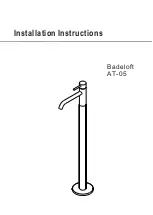
14
SECTION V
SERVICE AND MAINTENANCE
5-1.
GENERAL
WARNING
Service or maintenance should be performed by qualified personnel familiar with the siren,
associated controls, and power sources being used.
The siren has moving parts and high operating currents that could cause severe personal
injury, electrocution, or death. Before servicing or maintaining, ensure that remote activation
cannot occur and disconnect power to the siren and its controls.
The Model 2 Siren is designed to require a minimum of maintenance. In addition, experience has shown
that all Federal Signal sirens are highly reliable devices. However, if a siren failure does occur, Federal Signal
will provide technical assistance with problems that cannot be handled locally. If assistance is desired, contact:
ANS Customer Care Center
Signal Division
Federal Signal Corporation
2645 Federal Signal Drive
University Park, Illinois 60484
800-524-3021
5-1.A MINIMUM RECOMMENDED INSPECTION
Test the siren for proper operation at least once a month. A daily test at noon, curfew, or other selected time is
preferred. This not only enhances the usefulness of the siren, but also instills public confidence in the reliability of the
warning system.
5-1.B
ANNUAL INSPECTION
In order to minimize the possibility of siren failure, inspection and maintenance at regular intervals is desirable.
Therefore, it is recommended that the procedure in this paragraph be performed at least once a year. However, it may be
necessary to increase the frequency of this procedure if the siren is used frequently or if it is used in an extreme climate.
1. Remove the housing and inspect the motor brushes. Replace the brushes if necessary.
2. Inspect all electrical and mechanical connections. Make sure that all fasteners are properly tightened.
3. Inspect the siren installation to be sure that it is vertically oriented. Take corrective action if a pole mounted
installation is more than 5° from vertical or a roof or flat surface mount is more than 10° from vertical to prevent
lubrication losses and excessive motor bearing wear.
4. Examine all painted surfaces. Repaint as necessary.









































